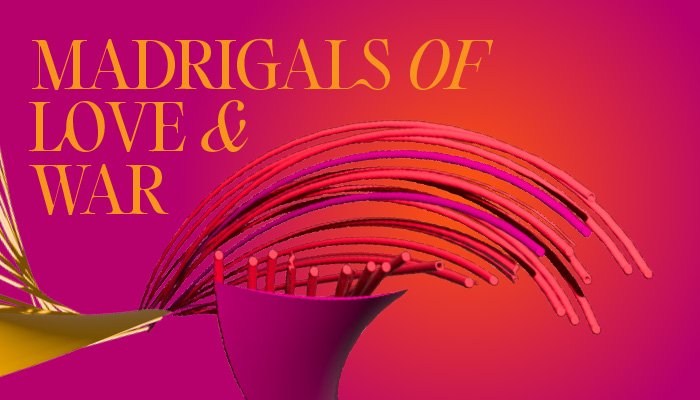In Praise of Virtue
Friday, September 20, 2024 at 7:30PM
Zilkha Hall, The Hobby Center for the Performing Arts (800 Bagby St, Google Maps)
In Praise of Virtue features soprano Hannah De Priest and countertenor Aryeh Nussbaum Cohen in two rarely heard solo cantatas: J. S. Bach’s beautifully reflective Ich bin vergnügt (BWV 84) and G. F. Handel’s glittering Splenda l’alba in oriente (HWV 166). Excerpts from Johann Adolph Hasse’s Marc-Antonio e Cleopatra set this noble love story with luscious melodies and spectacular virtuosity, in arias and duets for both soloists.
Featured artists:
Hannah De Priest, soprano˚
underwritten by Jeanie Flowers
Aryeh Nussbaum, countertenor
underwritten by Dr. Ellen R. Gritz & Milton D. Rosenau, Jr.
˚ Ars Lyrica debut
On the program:
Handel, Splenda l'alba in oriente HWV 166
Bach, Ich bin vergnügt BWV 84
Telemann, Concerto for Two Oboes and Violin in E Minor TWV 53:e2
Excerpts from Hasse, Marc'Antonio e Cleopatra
"[Aryeh Nussbaum Cohen] is extravagantly gifted...poised to redefine what’s possible for singers of this distinctive voice type" (SF Chronicle)
“The night's breakout artist was unmistakably soprano Hannah de Priest…” (The Boston Globe)
The performance run time including intermission is approximately 1.5 hours
Explore the full 2024/25 season here.
Watch the concert recording
The concert has passed. Watch the high-quality recording by purchasing a digital replay pass or digital subscription to the full 24/25 season!
Highlights on Youtube
We’re happy to share excerpts from the performance on our Youtube Channel, for free enjoyment of the concert.
Audience Reviews & Photos
"I was so impressed and completely satisfied by this performance. I read an article about Aryeh Nussbaum Cohen last summer and was so pleased to learn that he was doing this concert, which exceeded all expectations on my part. My entire party and I left singing your praises; this concert was indeed a rare treat. Bravo Ars Lyrica!"
"Loved everything about it. Talented musicians and great singers. Couldn’t ask for more."
"The program was expertly curated by Matthew Dirst and the lush, full voices of Cohen and De Priest added a sense of luxury to the music. The musicians never disappoint. It was a beautiful evening."
Photos by Pin Lim.

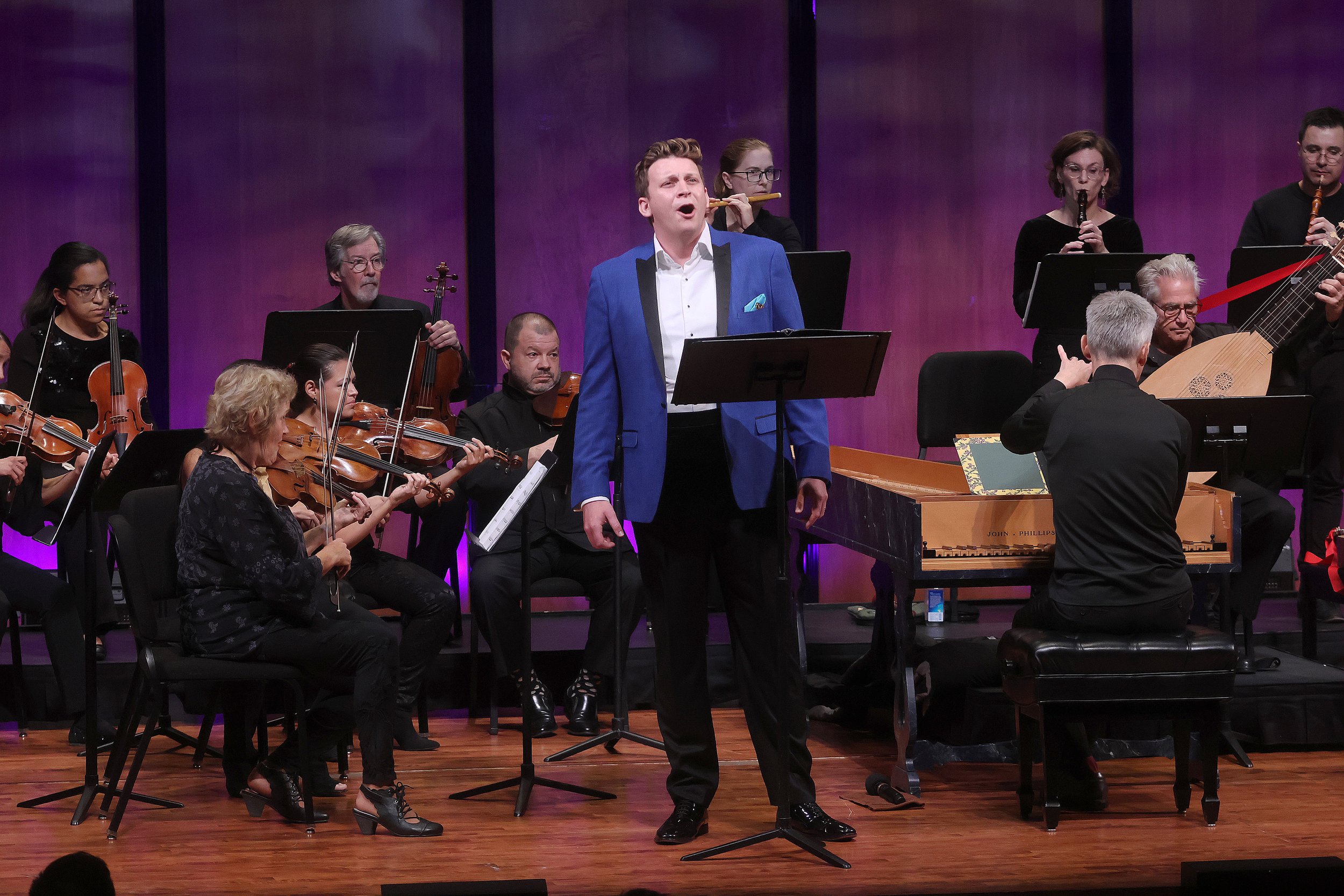
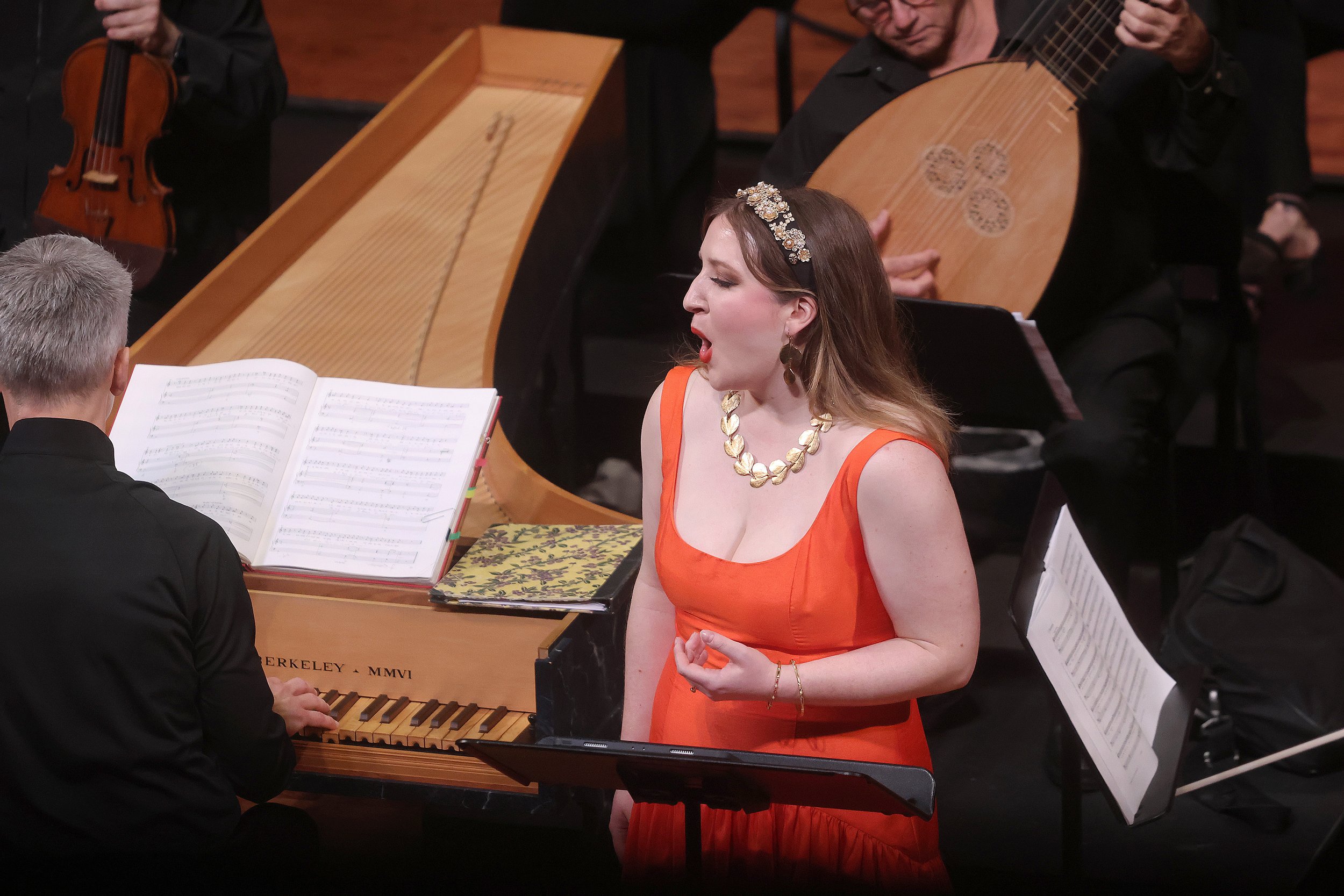
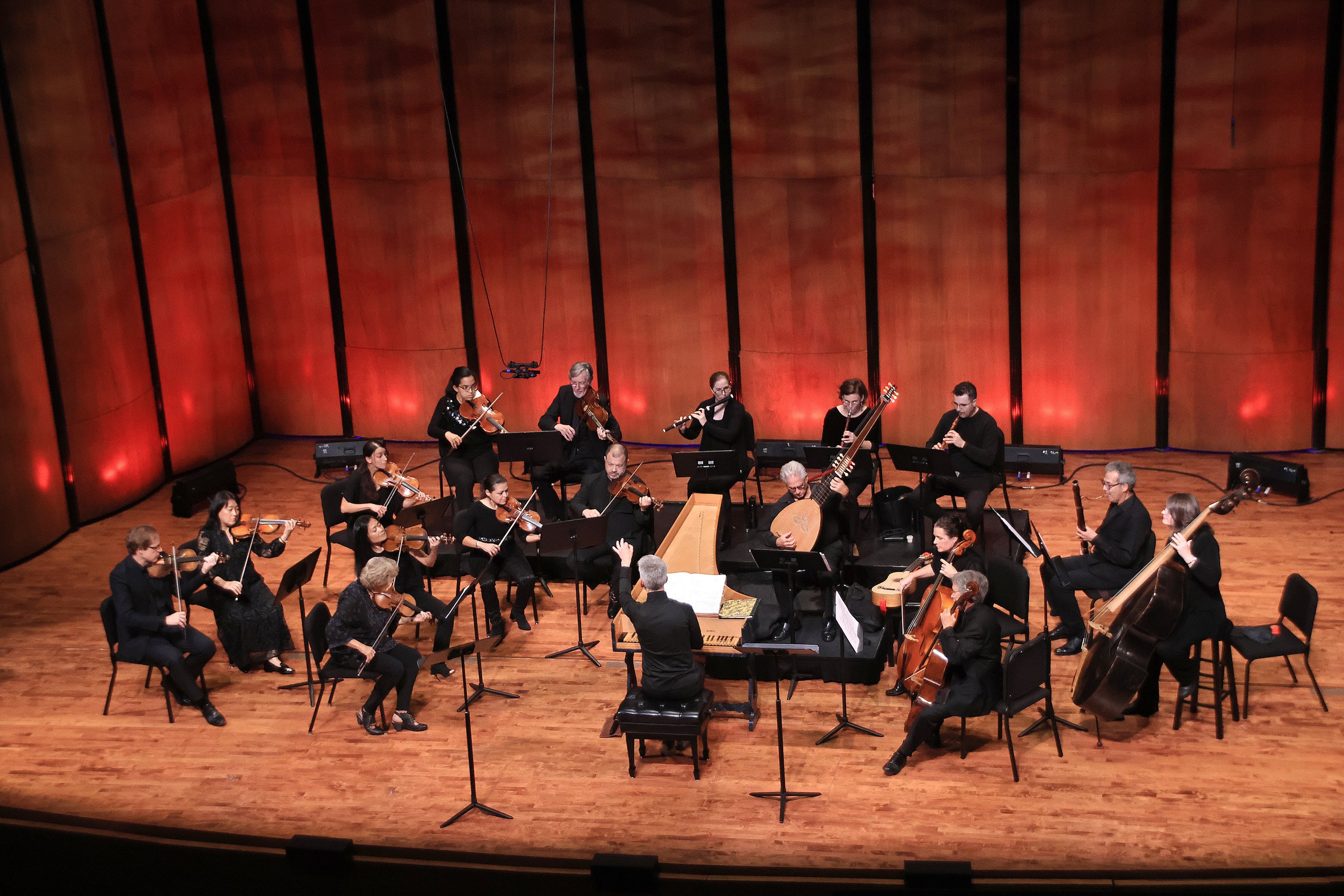
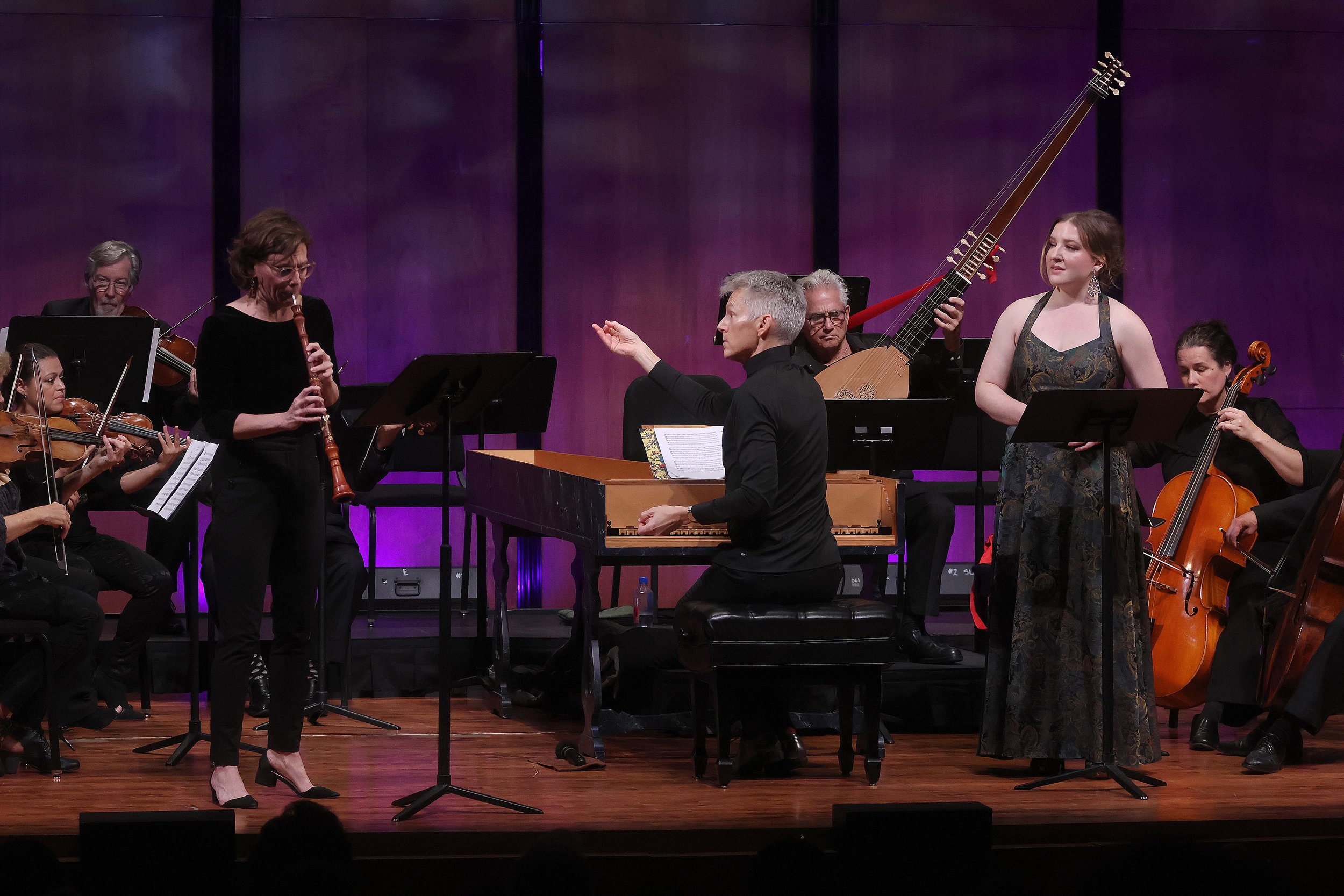
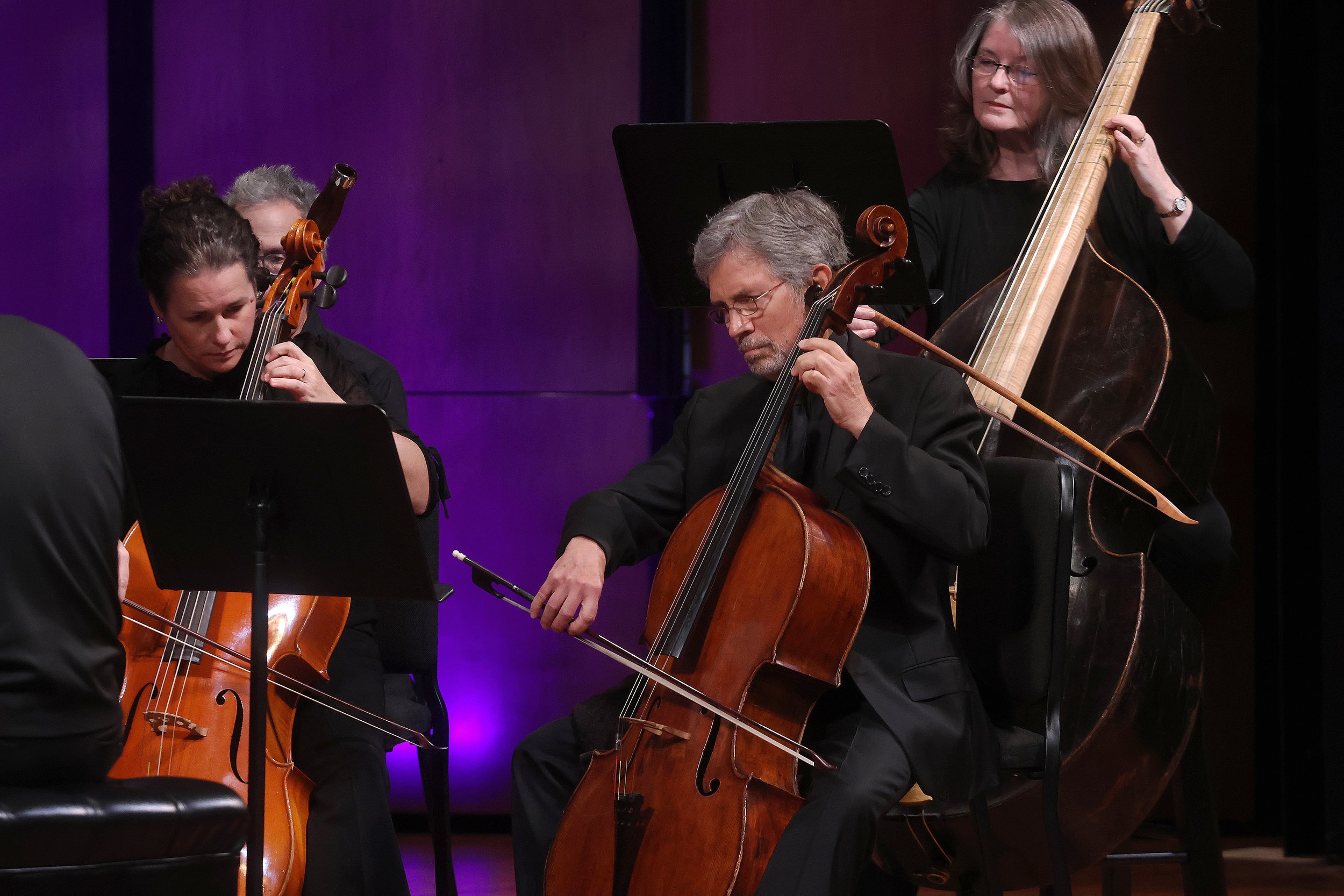

What to expect
Enjoy a previous performance of countertenor Aryeh Nussbaum Cohen singing Johann Sebastian Bach with Ars Lyrica Houston!
In this clip, Aryeh brings his golden tone to the beautiful aria “Wie starb die Heldin so vergnügt” from Bach’s Trauerode.
The 9/20 concert features substantial excerpts from Hasse’s Marc’Antonio e Cleopatra. Artistic Director Matthew Dirst calls the opera a “favorite work that I’m delighted to be returning to. Those who don’t know it may want to sample our 2011 recording of the work, which was nominated for a Grammy for Best Opera. It’s a terrific showpiece for soprano and countertenor, who play Cleopatra and Marc Anthony, respectively.”
-
Upon arrival in London in 1710, the twenty-five-year-old George Frideric Handel discerned quickly where compositional opportunity lay: in addition to Italian opera, the local populace adored music about St Cecilia, the patron saint of music. Splenda l’alba in oriente HWV 166 (1711/12) was the first of four works he created for the annual observance of her feast day, on November 22. Comprising two arias and a single recitative for alto soloist and orchestra, this cantata may have once included other movements, though its cogent (if concise) frame hardly needs them. More than twenty years later, Handel reset most of its text while recycling only some of its music in a longer Cecilian ode for two singers: Cecilia, vogli un squardo (1736).
Along with her husband Valerian, the historical Cecilia of 3rd-century Rome died a Christian martyr upon conversion. Reports that she “sang in her heart to the Lord” years earlier—while being forced into marriage—led to her veneration by musicians and subsequent sainthood. Cecilia-inspired works from English composers especially include some memorable catalogues of music’s charms: Henry Purcell’s Hail, bright Cecilia celebrates the organ’s “wondrous machine” plus the “airy violin” and “amorous flute” with characteristic invention and quirkiness. Handel’s Splenda l’alba in oriente combines a more soul-searching text with a flamboyantly Italianate musical frame. Its richly orchestrated namesake aria extolls Virtue “from dawn to sunset,” while the second aria’s craggy vocal line and careening instrumental obligato depict the “deep shadows” that lurk outside Virtue’s protected realm.
As music director to the cities of Frankfurt (1712–21) and Hamburg (1721–67), the indefatigable Georg Philipp Telemann composed thousands of works for various church and civic occasions. Over the course of an extraordinarily long career, he also produced reams of instrumental music, publishing much of it himself for distribution throughout Europe. His Concerto in E Minor for Two Oboes and Violin TWV 53:e2 follows an unusual formal plan: following the Andante, the sources direct players to return to the Allegro before concluding with the Menuet. This creates a substantial opening movement of three distinct sections—each with its own key center, melodic material, and virtuosic solo riffs—followed by a lilting Menuet scored for the tutti without solos.
Johann Sebastian Bach composed his solo cantata Ich bin vergnügt mit meinem Glücke BWV 84 in 1727 for the Ninth Sunday before Easter, otherwise known as Septuagesima (70 days before Easter), which marks the beginning of Carnival or Mardi Gras season. Though no poet is credited, its libretto closely resembles a contemporaneous text of Picander (a.k.a. Christian Friedrich Heinrici), who collaborated with Bach on numerous works, both sacred and secular, during their shared decades in Leipzig. Scored for solo soprano, oboe, strings, and continuo, this cantata also comprises two arias of distinct characters—one introspective, the other exuberant—with interleaved recitatives and a closing chorale. The first performance would have involved three additional voices (alto, tenor, and bass) for the latter movement, whose text comes from Countess Emilie Juliane von Schwarzburg-Rudolstadt, a prolific 17th-century writer of hymns.
Unusually for a Bach church cantata, Ich bin vergnügt steers clear of the florid and often highly charged language of orthodox Lutheranism in favor of Enlightenment ideals. The resulting ode to rationality and personal contentment nevertheless ranges widely across the emotional sphere, from a probing and decorative opening movement to a joyous and dancelike interior aria. Gratitude is its guiding light, with a strong secondary emphasis on virtue.
The libretto of Marc’Antonio e Cleopatra, by poet and impresario Francesco Ricciardi, begins with Antony’s fateful military loss in 31 BC to Octavian’s superior forces, which put an end to civil war in the Roman Empire. Putting aside political agendas, Antony declares that his love for Cleopatra is worth more than any kingdom; Cleopatra is likewise reluctant to risk further conflict with Rome. Settling on joint suicide as the best way to preserve their honor, the protagonists of this serenata engage in spirited conversation while reminiscing about their storied love affair. Eschewing sadness, the work ends with a joyful celebration of a “beautiful, eventful age”—a time when love triumphed, even over death.
Johann Adolph Hasse’s score makes vivid the complex emotions of both characters in eight arias, two duets, and some highly expressive recitative, from which this program offers a generous selection of excerpts. Though scored for just strings and continuo, our performance adds various woodwind colors, rendering even more vivid Hasse’s imaginative and supple ideas. (Ars Lyrica’s recording of the work, in the same expanded orchestration and with soprano Ava Pine and mezzo-soprano Jamie Barton, was a Grammy nominee for Best Opera 2011.)
Written for a Neapolitan banker in 1725, Marc’Antonio e Cleopatra proved crucial to the young composer’s subsequent success in Italian opera. The work likely resonated deeply in Naples, which, like the famous lovers from Roman history, faced the unpleasant prospect of domination by a foreign power. But unlike Anthony and Cleopatra, who choose death over captivity, Naples had grown accustomed to Hapsburg rule. The final recitative in this work, by no accident, includes a bit of obligatory fawning to Emperor Karl VI and his consort Elizabeth.
From 1730 onwards Hasse served as Kapellmeister to the Saxon court in Dresden, where he surely met J. S. Bach, who greatly admired his mastery of the lyric Italian style. Hasse’s operas were among the first seen by the young Mozart, and though late 18th-century reforms threatened to put an end to Italian opera seria, Hasse continued to produce such works in Vienna, Venice, and elsewhere until the early 1780s. He and his wife, the famed soprano Faustina Bordoni, were perhaps the first “power couple” in operatic history.
© Matthew Dirst






